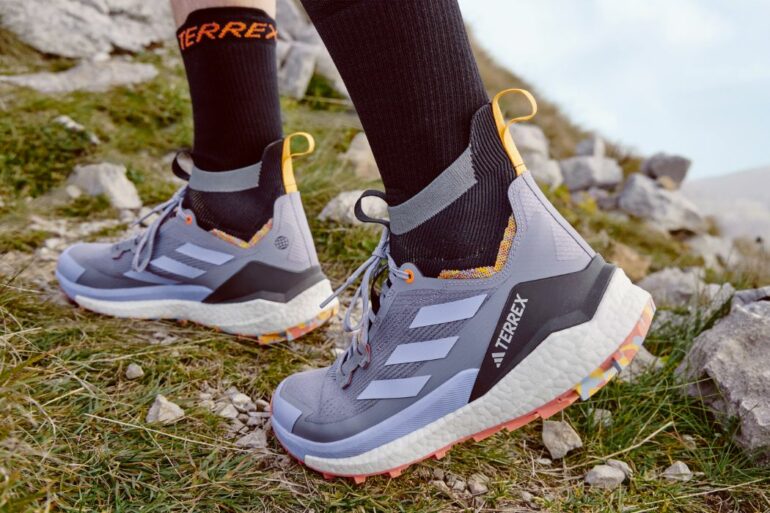German athletic clothing and shoes brand Adidas is launching 400,000 pairs of its trail running footwear line, TERREX, with carbon-captured ink from Calgary-based startup Oco.
Set to be released this fall, Adidas’ TERREX shoes will sport a design using Oco’s technology that blends screen printing ink with captured carbon material.
“It’s really about educating and getting consumers involved right away.”
– Madison Savilow, Oco
This new ink mixture for the TERREX line results in a screen-printed decal with “resilience to the natural elements,” according to Oco.
Carbon capture and utilization are part of a climate mitigation strategy that takes carbon emissions from the open air or point sources like a smoke stack to repurpose into other products. In order to maximize the effects of this method however, industry experts highlight the need for broad consumer acceptance.
Oco’s mission is to demystify carbon utilization for consumers by working with brands to create carbon-captured products. It is the consumer brands division of a larger Calgary-based cleantech startup, Carbon Upcycling Technologies (CUT), which focuses more on carbon capture solutions for building materials like cement and concrete.
CUT’s chief of staff Madison Savilow started working on what would become Oco out of her garage in 2019, with the aim to engage a broader audience of consumers about the use of captured carbon to make different things.
“It’s really about educating and getting consumers involved right away, starting the learning process of what this material is,” Savilow, now the lead for Oco, told BetaKit.
As Savilow explained, Oco’s processes and platform technology are generally the same as CUT’s. It takes CO2 in a gas form and stores it into a powder. Enhancements are made to that powder material through Oco, which Savilow said is needed to include in the end product.
Shortly after its inception, Oco started working with artists who wanted carbon dioxide-embedded materials for their own projects. Since then, Oco said it has developed over 300 “carbon dioxide-enhanced” materials and more than 25 different products with its partners.
“These materials have higher tensile strength. They’re mechanically more sound, they’re going to last longer,” Savilow said.
Savilow added Oco’s materials would be easier to recycle as well, with more opportunities to be reused—a process referred to as “recyclability.”
“Typically when you put hard plastic into a recycling stream, you get two to three cycles of recyclability,” Savilow explained. “With our material, we’re seeing like five to seven.”
Some of the products that Oco has made with its partners are jackets, yoga mats, bag zippers, and beeswax crayons, as well as textiles like fabric dye and handmade sequins.
For its partnership with Adidas, Oco said its ink would remain resilient through all sorts of environmental impact with less chance of peeling off.
Oco said it plans to release new carbon-captured products this year, including packaging for the cosmetic and beauty industry.
“Our goal is to really broaden the scope of our production.” Savilow said. In addition to new product launches, she added that Oco is now developing modular carbon capture and utilization reactors, which would allow businesses to manufacture Oco’s material on site.
Featured image courtesy Oco.


